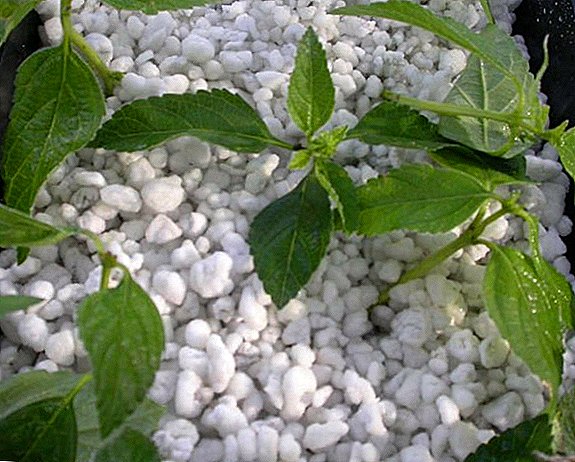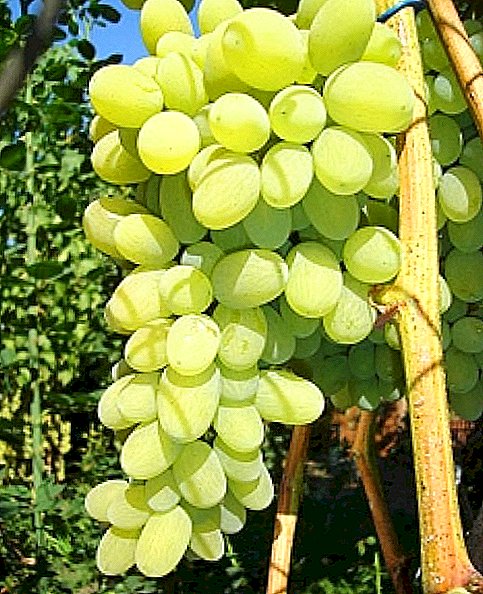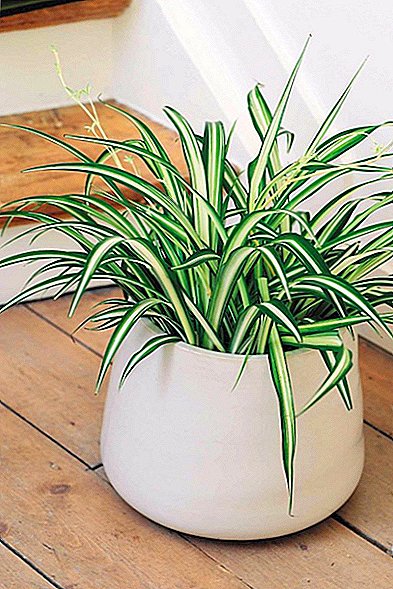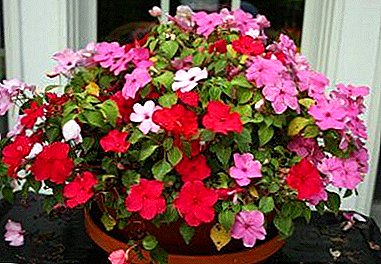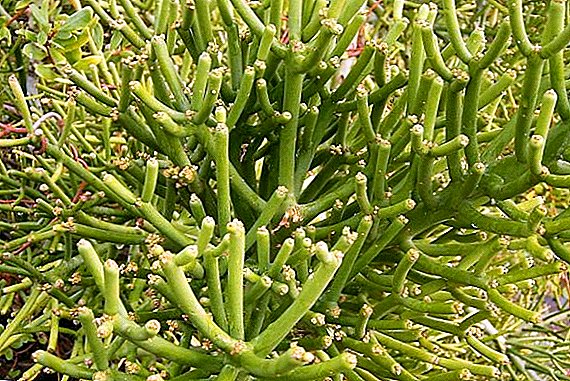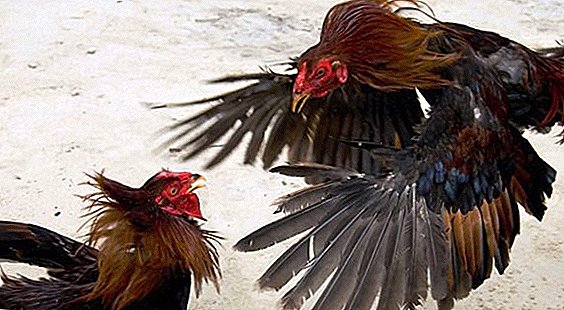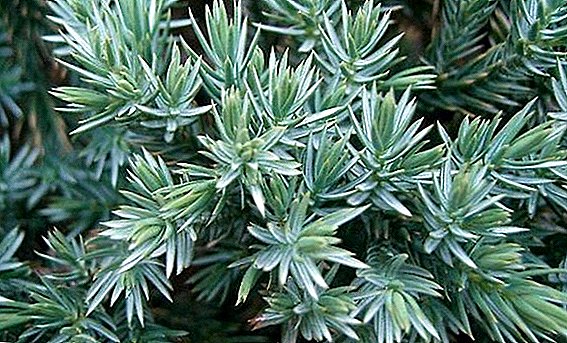 Landscape designers very often use a beautiful, decorative coniferous plant - juniper Blue is old, elegantly decorating their exquisite compositions. This popular garden culture is grown today in summer cottages, in parks, gardens and other planting areas.
Landscape designers very often use a beautiful, decorative coniferous plant - juniper Blue is old, elegantly decorating their exquisite compositions. This popular garden culture is grown today in summer cottages, in parks, gardens and other planting areas.
Blue Star: description
Juniper Blue Star got its beautiful name because of the actual similarity with the blue star, to understand this, you need to refer to its description.  An evergreen dwarf plant is a shrub with a dense semi-circular crown, having a silver-blue color and scaly needle-like needles.
An evergreen dwarf plant is a shrub with a dense semi-circular crown, having a silver-blue color and scaly needle-like needles.
Did you know? Juniper, if not tied to a specific variety, has a whole wreath of exquisite names: fire tree, veres-yalinets, brewer, juniper, mozhuhaha, grouse berries.
The unearthly turquoise hue of the needles of Blue Star is observed only in the summer period, in the winter it changes its color to purple or violet.
For ten years, it grows only up to half a meter, and the annual increase in dimensions is 5 cm and 10 cm (respectively, in height and width). Pine-like fruits (cones) of dark, dark blue, almost black color grow about 5 mm in size.  Emerald coniferous handsome has high phytoncidal, insecticidal and antiseptic properties.
Emerald coniferous handsome has high phytoncidal, insecticidal and antiseptic properties.
It will be interesting for you to learn about coniferous plants such as myricaria, foxtail, cryptomeria, larch, western thuja, Nordman fir.Its volatile phytoncides (biologically active substances) inhibit the growth of pathogenic bacteria and certain types of microscopic fungi, disinfect the air to 20-30 percent.
Important! The needles of a decorative blue star are relatively poisonous, so a person should avoid close contact with these bushes.
Landing features
The characteristics of planting juniper scaly blue star are as follows:
- It should be planted only in sunny areas, as in the shade it grows weak and loose and completely loses its decorative appearance;  - If you plan to plant several bushes at once, you should definitely keep a distance of at least 0.5 m between them, the best option would be 2 meters;
- If you plan to plant several bushes at once, you should definitely keep a distance of at least 0.5 m between them, the best option would be 2 meters;
- It should also be remembered that this variety does not tolerate overwetted soil.
Soil requirements
This variety is unpretentious to the soil. It can be planted in marshy and even saline land. Clayey soil needs to be maintained by systematic drainage, and other types of earth should be diluted with peat mixture. The most ideal soil for Blue Star is slightly acid, fluffy loam.
Place to grow
As mentioned above, for a blue star you need to choose only sunny places. They should also be well ventilated.
The bush will serve as a wonderful decoration for an alpine slide, a rocky garden, a rocky composition, and will also give a well-groomed green look to the cemetery site. For its cultivation quite suitable special containers.
Read also about these types of juniper: virgin, Siberian, Chinese, horizontal.If the gardener manages to choose Blue Star for a juniper, the right place for planting and to observe all the necessary nuances, the plant will certainly thank him for its rich unusual color and delightfully lush shrubs.

How to plant juniper
When planting a silver-blue plant in a sandy soil or rocky soil, you must first dilute the prepared soil mixture with clay or humus.
Pristine space should be compacted with mowed grass, pine bark or promulcated with peat. Further follow the steps below:
- At the bottom of the prepared pit lay a wide layer (up to 0.2 m) of broken brick, but if you wish, you can replace it with sand;
- The root collar is required to be left at the level of the soil surface, that is, not to deepen it especially;
- Crushed stone drainage must be performed if the groundwater is close enough to planting. 
Important! The most ideal soil composition for a decorative juniper when planting is sand, peat and earth mixed in equal proportions.
Care features
Juniper Blue Star prefers not too intrusive care. However, in the winter it still needs to be taken care of.
Despite the fact that it is winter-hardy, the bushes are sprinkled with a peat 10-centimeter layer, and the young growth is covered with spruce branches. This variety can suffer from heavy snow, so in the fall, the branches should be pressed to the trunk with a rope or ribbon.  In addition to care in the winter, the blue star loves mulching very much, because it greatly accelerates its growth and allows for additional access of the root system to moisture.
In addition to care in the winter, the blue star loves mulching very much, because it greatly accelerates its growth and allows for additional access of the root system to moisture.
Before it is carried out, the site is thoroughly cleaned from debris and weeds. Mulch should consist of stones or gravel, its layer is usually 6-8 cm.
How to water
Immediately after planting for a week, a bush of juniper is recommended abundant watering, then the regularity is reduced to 1 time in 1-2 weeks. This non-capricious coniferous shrub doesn't tolerate a dry atmosphere, so it should be regularly sprinkled, without over-wetting the soil. This is done during the sunset.
Fertilizer and dressing
About fertilizer and fertilizing the soil during the care of the emerald bush, too, can not be forgotten. The mixture consisting of nutritional, complex and mineral substances is introduced during the period when the kidneys swell (from the end of March and the whole of April).  It is placed around the plant, the depth can vary from 5 to 10 cm. After feeding, the soil is watered abundantly.
It is placed around the plant, the depth can vary from 5 to 10 cm. After feeding, the soil is watered abundantly.
Important! Fertilizers should not be placed under the branches or directly under the root, it is better to do this, departing about 15 cm from it.
Pruning plants
The crown does not need special pruning, but in the spring it is still better to clean the bush from dry and improperly growing branches.
Reproduction of juniper Blue Star
All conifers of this species are dioecious, therefore both vegetative and seed reproduction are available. But ornamental species from seeds are usually very hard or even impossible to obtain, so you can turn to grafting. For this, an elderly bush of 8–10 years will do; young cuttings (10 cm) with a piece of wood (heel) are cut from it in mid-May. Then the lower half of the needles are cleaned, the bark is cut with scissors, and the cutting is placed in the selected growth stimulator for a day.
After that, the branch can be planted in a sand-peat mixture (1: 1), covered with a film and put in a shady place for about a month and a half. It is better if the air temperature is 15-20 degrees.
Heather, thuja, blue spruce, geyhera also reproduce by cuttings.When the root system has developed enough, the juniper can be transplanted into open ground. After about three years, when re-growing is over, a permanent place is chosen.
Did you know? AT antiquity smoke from the fires, which burned juniper wood, protected from the spread of plague.
Diseases and pests
All types of junipers suffer from this disease - rust. Pests in this case are uninvited animals, which gradually salt the soil, from this, respectively, on the shoots appears red needles, and over time the branches dry up altogether.  Another plant can turn yellow and become "bald" due to poor ecology and too wet soil. At the first symptoms of the disease, Blue Star is deposited, and all damaged shoots are removed. Treatment is usually carried out with microfertilizers and immunostimulants.
Another plant can turn yellow and become "bald" due to poor ecology and too wet soil. At the first symptoms of the disease, Blue Star is deposited, and all damaged shoots are removed. Treatment is usually carried out with microfertilizers and immunostimulants.
Important! The Arceride tool helps very well, they need to spray the diseased plant three times. Manipulation should be repeated after ten days.Mining moths, spider mites, scutes and aphids can also become obsessive pests. From the latter, you can use "Fitoverm", from the moth "Decis", the shield does not tolerate karbofos, and the preparation "Karate" helps the tick perfectly.
Using these tips and simple techniques of landscape design, using a coniferous miracle, you can turn your private garden into a living corner of emerald nature and enjoy the result of your work every day.


